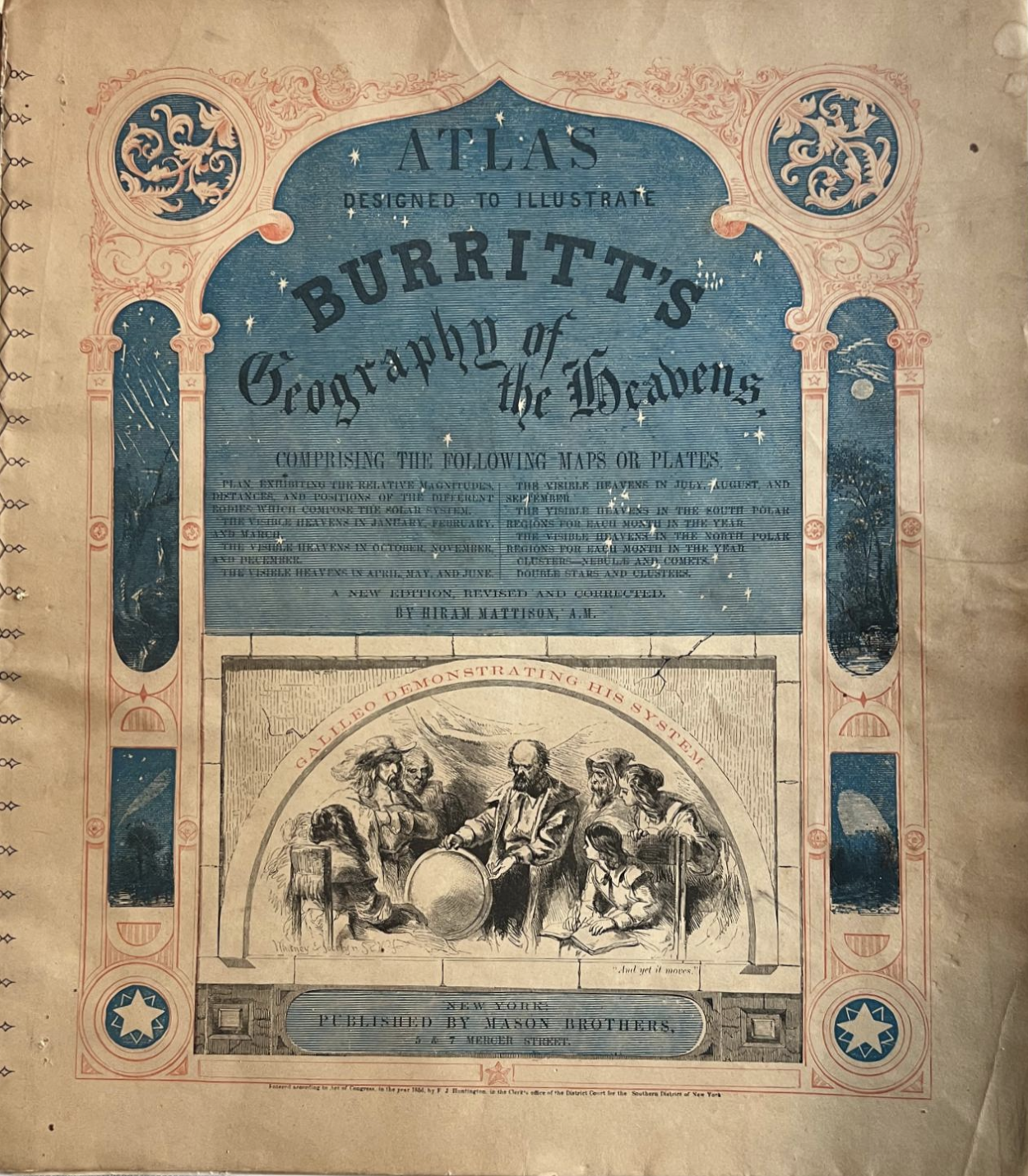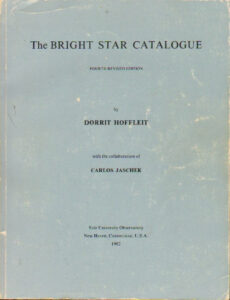By Kristine M. Larsen
 Our state may be small, but its influence on astronomy is out of this world. Get to know seven Connecticut residents who made indelible marks on our understanding and appreciation of the universe.
Our state may be small, but its influence on astronomy is out of this world. Get to know seven Connecticut residents who made indelible marks on our understanding and appreciation of the universe.
Like his more famous younger brother Elihu, New Britain native Elijah Hinsdale Burritt (1794–1838) trained as a blacksmith. He later attended Williams College and studied astronomy. In 1833, he published The Geography of the Heavens, a user-friendly astronomy textbook accompanied by detailed star maps meant to facilitate observations of the night sky. The book continued to be published for decades after Burritt’s untimely death, counting horror writer H. P. Lovecraft among its fans.
Norwich native William Tyler Olcott (1873–1936) attended law school after graduating from Trinity College in Hartford. In 1909, he attended a lecture by E. C. Pickering, director of the Harvard College Observatory, which sparked his passion for observing variable stars (stars that measurably change brightness over time). Olcott pioneered our understanding of these fickle flames, cofounding the American Association of Variable Star Observers (AAVSO) in 1911. Today this organization remains at the forefront of variable star observation, with over 54 million separate data points available to educators, researchers, and citizen scientists.
Margaretta Palmer (1862–1924) of Branford began reaching for the stars as a young woman. At Vassar College, she studied under the famed Maria Mitchell, the first American woman astronomer. After graduation, Palmer worked for Mitchell for two years before returning to Connecticut as an employee of the Yale University Observatory. In 1894, this trailblazer completed her doctorate, one of the first earned by a woman in astronomy; her research calculated the orbit of a comet Mitchell had discovered in 1847. During her career at Yale, she contributed to several important star catalogs.
Yale star catalogs also provided valuable research opportunities for Ellen Dorrit Hoffleit (1907–2007). Born in Alabama, Hoffleit was raised in Pennsylvania and continued northward to Cambridge, Massachusetts, where she received a BA in mathematics from Radcliffe before joining the staff of the Harvard College Observatory. Bolstered by the encouragement of director Harlow Shapley and staff astronomer Bart Bok, she earned an MA and PhD in astronomy from Radcliffe. Hoffleit left Harvard for Yale in 1956, but she never forgot the life-changing support of her mentors and spent the remainder of her life paying it forward. From 1957–1978, she served as director of the Maria Mitchell Observatory on Nantucket, running a summer program for undergraduate astronomy research. Many of the young women—and a few young men—she mentored on Nantucket became professional astronomers; one, Janet Mattei, became the director of the AAVSO in 1973. Once chief editor of the Yale Bright Star Catalogue, Hoffleit retired from Yale in 1975. She remained committed to astronomical research and popularizing women’s history in astronomy until shortly before her death at age 100.
Phillip K. Lu (1932–) was born to a peasant family in China and attended a maritime college in Taiwan before emigrating to America with his wife in 1962. Once in Connecticut, he earned an MA in astronomy from Wesleyan University and a PhD from Columbia University and conducted research at Yale. Lu served thirty years as a professor of astronomy and astrophysics at Western Connecticut State University before retiring in 2000. His research focused on using the motions of stars to map the structure of our galaxy, including the search for dark matter. In retirement, he illuminates minds in a different way, as a writer of bilingual poetry.
Astronaut Franklin Ramón Chang-Díaz (1950–) was born in Costa Rica but completed his high school education at Hartford High School. He earned a BS in mechanical engineering at the University of Connecticut and a PhD in applied plasma physics at the Massachusetts Institute of Technology. Chang-Díaz joined the astronaut corps in 1980 and first touched space in 1986 aboard the space shuttle Columbia. Before retiring from NASA in 2005, he flew on seven shuttle missions. He took part in extravehicular activities as part of the construction of the International Space Station, which, thanks to Chang-Díaz, has Constitution State pride built directly into it.
Noreen Grice (1963–) has dedicated her career to making the universe accessible to everyone, no matter their physical circumstances. Her distinguished career in the planetarium field includes over 25 years at the Boston Museum of Science and, more recently, at the Children’s Museum in West Hartford. Grice currently serves as president of the Middle Atlantic Planetarium Society. The author of several Braille and tactile astronomy books, Grice received the 2007 Klumpke-Roberts Award from the Astronomical Society of the Pacific for outstanding contributions to the public’s understanding and appreciation of astronomy.
Kristine Larsen is Connecticut State University Professor of Earth and Space Sciences at Central Connecticut State University.
Download the poster here.

